
Struggling to make a clean cut on a stubborn bolt? Using an angle grinder can feel intimidating, but it is a fast and effective method when you know the right steps.
To cut a bolt with an angle grinder, first secure the bolt tightly in a vise. Then, mark your cut line, and put on all your safety gear. Use a thin metal cut-off disc, approach the bolt at a slight angle, and let the tool do the work with steady pressure.
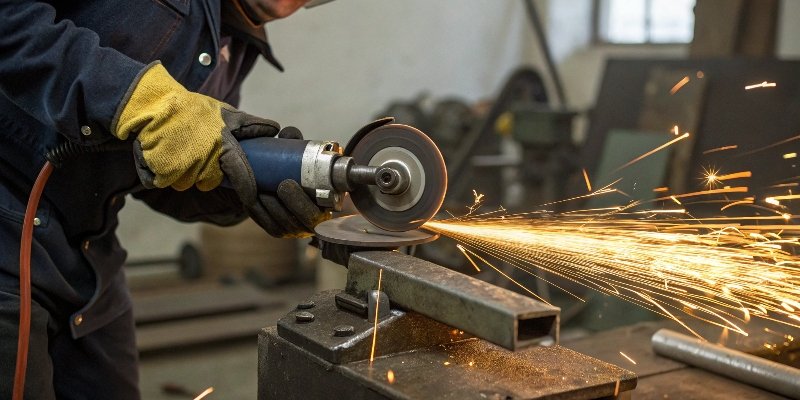
Using an angle grinder1 is a common task in workshops like mine, but it requires respect for the tool and a clear process. Many people jump right in without proper preparation, leading to messy cuts, damaged threads, or even injuries. The difference between a professional job and a dangerous mess often comes down to a few simple preparations and techniques. We can walk through the exact process, from picking the right disc to getting a smooth, finished cut. Following these steps will help you work safely and get the results you need every single time.
What are the essential safety precautions for cutting bolts with an angle grinder?
Worried about the sparks and noise of an angle grinder? Safety should always be your first thought. Ignoring it can turn a simple job into a trip to the emergency room.
Always wear safety goggles, gloves, and ear protection. Secure the bolt firmly in a vise, stand to the side of the cutting path, and keep your work area clear of any flammable materials. Check that your grinder’s guard is in place before you start.
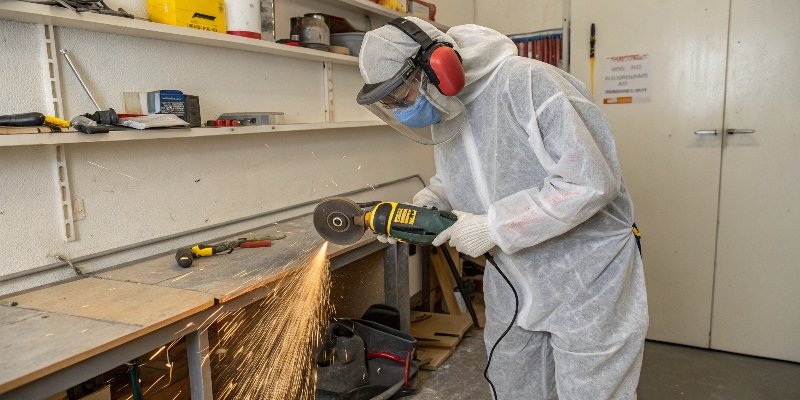
In my factory, we have a simple rule: no safety gear, no work. It’s not about being strict; it’s about going home in one piece. I saw a new worker once try to make a quick cut without goggles. A tiny metal shard flew off and narrowly missed his eye. He never made that mistake again. Before you even plug in the grinder, you must prepare your workspace and yourself.
Here is a simple safety checklist we follow:
Personal Protective Equipment (PPE)
- Eye Protection: Non-negotiable. A full-face shield over safety glasses is best. Sparks and debris fly off at high speed.
- Hand Protection: Wear tight-fitting leather gloves. They protect you from sparks and sharp edges after the cut.
- Hearing Protection: Angle grinders are loud. Earplugs or earmuffs will protect your hearing from long-term damage.
- Proper Clothing: Wear non-flammable clothing like cotton or wool. Avoid loose sleeves or anything that could get caught in the spinning disc.
Workspace Safety
- Secure the Bolt: Use a bench vise or strong clamps to hold the bolt. A moving target is a dangerous one.
- Clear the Area: Remove anything flammable, like sawdust, rags, or fuel cans. Have a fire extinguisher nearby, just in case.
- Proper Stance: Never stand directly in line with the cutting disc2. If the disc shatters, the fragments will fly forward. Stand to the side.
Which type of angle grinder disc is best for cutting through metal bolts?
Choosing the wrong disc can make your job harder or even break the disc. You might be tempted to grab any disc, but this simple choice makes a huge difference in performance.
For cutting metal bolts, you should use a thin "cut-off wheel" or "cutting disc" specifically designed for metal. These are abrasive discs, typically 1mm to 3mm thick, and are much more efficient for slicing through metal than thick grinding wheels.
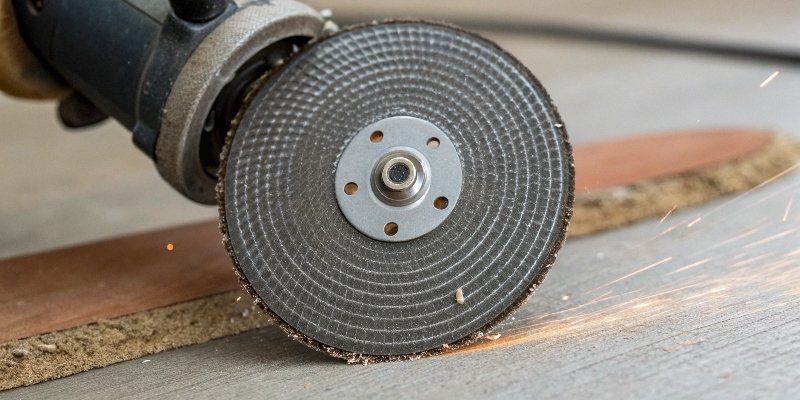
We produce millions of abrasive discs every year, and I can tell you that the right tool for the job is critical. Using a thick grinding wheel3 to cut a bolt is a common mistake. A grinding wheel is designed to remove material from a surface, not to slice through it. It will create a lot of heat, a wide messy cut, and will work very slowly. A thin cut-off wheel works much better. It removes less material, which means a faster, cleaner cut with less effort and less heat buildup. This reduces the chance of discoloring the metal or damaging the disc.
Here’s a simple breakdown of discs:
| Disc Type | Best Use | Why it works for bolts |
|---|---|---|
| Thin Cut-Off Wheel | Slicing metal, like bolts, rebar, sheet metal. | Its thin profile cuts quickly with minimal material waste and heat. |
| Grinding Wheel | Shaping metal, smoothing welds, removing rust. | Too thick for efficient cutting. It will grind rather than slice. |
| Flap Disc | Finishing and blending surfaces, light grinding. | Not designed for deep cuts. It would wear out very quickly. |
Always check that the disc’s maximum RPM rating is higher than your angle grinder’s RPM. Also, ensure the disc is not cracked or damaged before you mount it. A damaged disc can shatter during use.
What are some common mistakes to avoid when cutting bolts with an angle grinder?
Have you ever finished a cut and been left with a burnt, jagged mess? Many simple mistakes can ruin your work. Knowing what not to do is just as important as knowing what to do.
Avoid applying too much force, as this can cause the disc to jam or shatter. Do not start the cut without the bolt being tightly secured. Also, never use a disc that is worn down, cracked, or designed for a different material like wood or masonry.
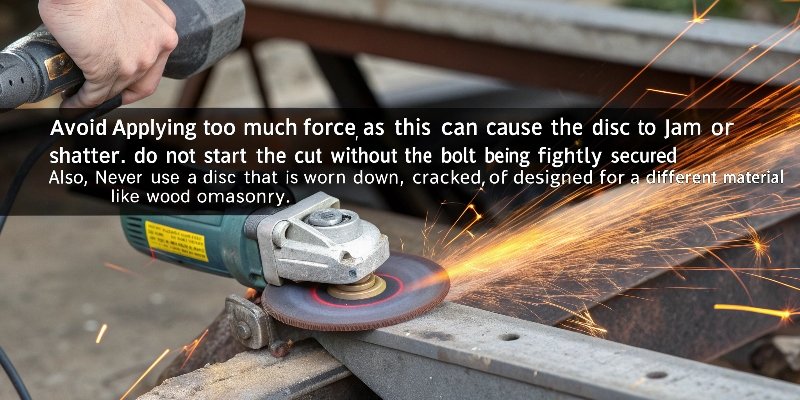
Experience teaches you what to avoid. One of the biggest mistakes I see is trying to force the grinder through the metal. People get impatient and push down hard. This doesn’t make the cut faster; it just creates friction and heat. This can burn the bolt, wear out your disc, and put a dangerous strain on the grinder’s motor. The right way is to let the speed of the disc do the work. Use light, steady pressure and let the tool glide through the material. Another classic error is a "wobbly setup." If the bolt isn’t clamped down tightly, it can vibrate or shift during the cut. This leads to a crooked cut and is very dangerous, as the disc can bind in the metal and kick back at you.
Here are some other things to avoid:
- Cutting at a 90-degree angle: Approaching the bolt straight on can cause the grinder to jump. A slight angle, around 30 degrees, gives you better control.
- Stopping and starting mid-cut: Try to make the cut in one smooth motion. Stopping in the middle can create a notch where the disc can get stuck when you restart.
- Using a dull or wrong disc: As we discussed, a worn or incorrect disc is inefficient and unsafe. Don’t try to save a few pennies at the risk of injury or a ruined project.
- Removing the safety guard: The guard is there for a reason. It directs sparks away from you and will help contain fragments if the disc breaks. Never take it off.
How can you get a clean and smooth finish on a bolt after cutting it?
Is your cut bolt too rough to use? A sharp, messy edge can ruin threads and make the bolt useless. Getting a smooth finish is the final step to a professional job.
To get a clean finish, first let the bolt cool down. Then use a metal file or a flap disc on your angle grinder to gently remove any sharp burrs from the cut edge. For threaded bolts, threading a nut on before you cut makes it easy to clean the threads.
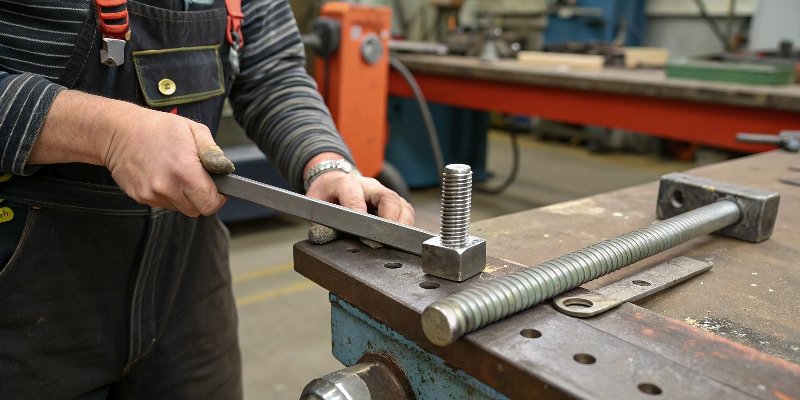
The cut itself is only half the battle. A freshly cut bolt will have a sharp, raised edge called a burr. This burr can prevent a nut from threading on or cause problems with assembly. In our factory, finishing is a critical quality step. The easiest way to deal with this at home is with a hand file. A few simple strokes around the edge are usually enough to smooth it out. If you have a lot of bolts to do, you can use your angle grinder again. Just swap the cut-off wheel for a flap disc. A flap disc is made of overlapping pieces of sandpaper and is perfect for smoothing and blending the cut edge without removing too much material.
Here is a great trick for preserving the threads:
- Thread a nut onto the bolt before you cut. Position the nut below your planned cut line.
- Make your cut as usual. The nut will protect the threads near it.
- After the cut, simply unscrew the nut. As you turn it, the nut’s threads will straighten out any minor damage on the bolt’s threads at the very end. This re-forms the lead thread, making it easy to use the bolt again.
This simple technique saves a lot of time and frustration. It’s much easier than trying to fix damaged threads after the fact.
Conclusion
Cutting bolts with an angle grinder is safe and effective when you use the right disc, proper safety gear, and a steady technique. Secure your work, and finish by smoothing the burrs.
Written by
leeon
You may also be interested in:
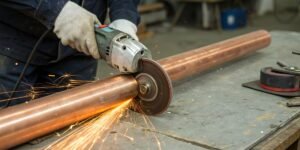
Can I use an angle grinder to cut a copper pipe?
Struggling with a quick copper pipe cut? Worried about damaging the material? An angle grinder is a fast solution, but using it wrong can be
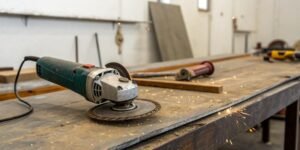
Can an angle grinder cut meat and bones?
Struggling to cut tough bones? Thinking of grabbing your angle grinder for a quick solution? This powerful tool seems like an easy answer, but it’s
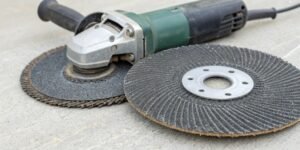
Can a metal cutting disc be used on an angle grinder?
Are you unsure about putting a metal cutting disc on your angle grinder? Using the wrong tool combination is a real safety hazard. But with
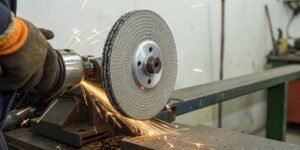
What is the best grinding wheel for cutting aluminum alloys?
Struggling to cut aluminum without your grinding wheels clogging up? This common problem wastes time, ruins your workpiece, and drives up costs, turning a simple
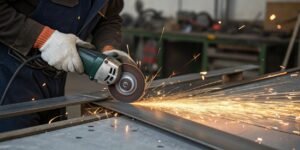
What does an angle grinder do that other tools can't?
Struggling with tools for multiple tasks? Carrying a heavy toolbox is inefficient. An angle grinder replaces many tools, saving you time and effort on the

Which material is used in making cutting wheel?
Have you ever used a cutting wheel that wore out too fast or just wouldn’t cut? The right material is key to solving this problem
